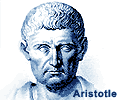Russia’s Post-Soviet Borderzone in Between East and West (Analysis of Political Discourse). Part II:
Looking East
Kolosov V.A.,
Professor, Deputy Director and Head, Laboratory of Geopolitical Studies, Institute of Geography, Russian Academy of Sciences, vladimirkolossov@gmail.com
elibrary_id: 625820 |
Zotova M.V.,
Senior Researcher, Laboratory of Geopolitical Studies, Institute of Geography, Russian Academy of Sciences, zotovam@bk.ru
elibrary_id: 141138 |
Popov F.A.,
Researcher, Laboratory of Geopolitical Studies, Institute of Geography, Russian Academy of Sciences, fpopov15@gmail.com
elibrary_id: 623528 |
Gritsenko A.A.,
Researcher, Laboratory of Geopolitical Studies, Institute of Geography, Russian Academy of Sciences, ntohaha@yahoo.com
elibrary_id: 623821 |
Sebentzov A.B.,
Senior Researcher, Laboratory of Geopolitical Studies, Institute of Geography, Russian Academy of Sciences, asebentsov@gmail.com
elibrary_id: 618867 |
DOI: 10.17976/jpps/2018.05.06
Kolosov V.A., Zotova M.V., Popov F.A., Gritsenko A.A., Sebentzov A.B. Russia’s Post-Soviet Borderzone in Between East and West (Analysis of Political Discourse). Part II: Looking East. – Polis. Political Studies. 2018. No. 5. P. 57-69. (In Russ.). https://doi.org/10.17976/jpps/2018.05.06
The article is devoted to the study of evolution of public perceptions of new Russia’s borders through the analysis of their representation in Russian printed media. “Nezavisimaya Gazeta” was chosen as a focus newspaper. The study is based on a database of publications collected through screening of this edition in four periods: 1994-1995, 2000-2003, 2008-2012 and 2013-2014. The newspapers “Sovetskaya Rossiya”, “Zavtra” and “Novaya Gazeta” were used as the sources of additional information. The authors discovered that modernized East-West dilemma serves as a framework of these representations. Russia faces a fundamental choice between two vectors. The Western (European) vector means the rapprochement with the EU and NATO, adoption of their values and development models. The Eastern (Eurasian) one implies total or partial reintegration of post-Soviet space and creation of new autonomous center of power within upcoming multi-polar world. Debates about the future of newly formed borders and the whole post-Soviet space, about building relations with former union republics on the one hand and the EU and NATO on the other, about aims and composition of regional integration projects etc. has invariably focused on the analysis of this dilemma. Since the 1990s there have been changes not only with the balance between two vectors within the media political discourse (non-contradicted in early 1990s they turned in the middle of 2010s into opposite sides of a dichotomy while the eastern vector appeared to be a dominant one) but also with their proper understanding. This article concerns with the Eastern part of two-faced discourse that reflects the transformation of Eurasian integration from the process of mutual attraction of Russia and other post-Soviet republics after a long period of coexistence as parts of a single state to one of the basic forms of global war between East-Russian and collective West. The issue of identity, state building and “battles of memories” which influence the perception of post-Soviet borders are considered in the same context. The final section assesses the possibility of usage of semantical approach to the analysis of meanings (words and senses) forming political language.
References
Kolosov V.A. “Low” and “High” Geopolitics. the Images of Foreign Countries in the Eyes of Russian Citizens. – Otechestvennye Zapiski. 2002. No. 3 (4). P. 33-51. (In Russ.)
Kolosov V.A. Theoretical Limology: New Approaches. – International Trends. 2003. Vol. 1. No. 3 (3). P. 44-59. (In Russ.)
Mir glazami rossijan: mify i vneshnjaja politika [The World in the Eyes of Russian Citizens: Myths and Foreign Policy]. Ed. by V.A. Kolosov. Moscow: Public Opinion Foundation Institute Publ. 2003. 304 p. (In Russ.)
Newman D., Paasi A. Fences and Neighbours in the Postmodern World: Boundary Narratives in Political Geography. – Progress in Human Geography. 1998. Vol. 22. No. 2. P. 187-207. https://doi.org/10.1191/030913298666039113
O’Tuathail G. Critical Geopolitics. The Politic of Writing Global Space. London: Routledge. 1996. 314 p.
O’Tuathail G., Dalby S. Introduction: Rethinking Geopolitics. Towards a Critical Geopolitics. – Rethinking Geopolitics. Ed. by G. O’Tuathail & S. Dalby. London: Routledge. 1998. P. 1-15.
Popov F.A. Evolution of the Perceptions of Integration Processes in the Post-Soviet Space. – World of Transformations. 2016. No.1. P. 147-163. (In Russ.)
Vendina O.I., Kolosov V.A., Popov F.A., Sebentzov A.B. Ukraine in the Political Crisis: the Image of Russia as Catalyst of Contradictions. – Polis. Political Studies. 2014. No. 5. P. 50-67. (In Russ.) https://doi.org/10.17976/jpps/2014.05.05
Zamjatina N.Ju., Arutjunjan K.M. Correlation of the Images of European Countries in Press (Based on The Times and The New York Times Newspapers). – Vestnik Moskovskogo Universiteta. Ser. 5 Geografija. 2005. No. 5. P. 60–65. (In Russ.)
See also:
Kolosov V.A., Zotova M.V., Popov F.A., Gritsenko A.A., Sebentzov A.B.,
Russia’s Post-Soviet Borderzone in Between East and West: Looking West (Analysis of Political Discourse). – Polis. Political Studies. 2018. No3
Lukin A.V.,
Russia and China in Greater Eurasia. – Polis. Political Studies. 2020. No5
Kazantzev A.A.,
Grammar of «Russian Idea», or how to create new ideologies in Russia?. – Polis. Political Studies. 2010. No3
Semenenko I.S., Lapkin V.V., Bardin A.L., Pantin V.I.,
Between the State and the Nation: Dilemmas of Identity Policy in Post-Soviet Societies. – Polis. Political Studies. 2017. No5
Verlaine M., Shashkova A.V., Kudryashova E.V.,
Amendments to Russian Constitution and International Institutions Decisions: EAEU Prospective. – Polis. Political Studies. 2020. No5





.jpg)






 print
print
.jpg)
.jpg)